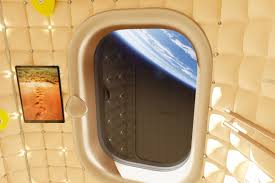
Breaking News
 James O'Keefe: My entire speech at AmericaFest 2025. We're not stopping. Join us to expose..
James O'Keefe: My entire speech at AmericaFest 2025. We're not stopping. Join us to expose..
 U.S. vs. Chinese Military Comparison – Focus on Asia-Taiwan Scenario
U.S. vs. Chinese Military Comparison – Focus on Asia-Taiwan Scenario
 DoJ Sues Four More States for Failing To Produce Voter-roll Data
DoJ Sues Four More States for Failing To Produce Voter-roll Data
 World's Largest Aviation Giant Abandons Google Over Security Concerns
World's Largest Aviation Giant Abandons Google Over Security Concerns
Top Tech News
 Perfect Aircrete, Kitchen Ingredients.
Perfect Aircrete, Kitchen Ingredients.
 Futuristic pixel-raising display lets you feel what's onscreen
Futuristic pixel-raising display lets you feel what's onscreen
 Cutting-Edge Facility Generates Pure Water and Hydrogen Fuel from Seawater for Mere Pennies
Cutting-Edge Facility Generates Pure Water and Hydrogen Fuel from Seawater for Mere Pennies
 This tiny dev board is packed with features for ambitious makers
This tiny dev board is packed with features for ambitious makers
 Scientists Discover Gel to Regrow Tooth Enamel
Scientists Discover Gel to Regrow Tooth Enamel
 Vitamin C and Dandelion Root Killing Cancer Cells -- as Former CDC Director Calls for COVID-19...
Vitamin C and Dandelion Root Killing Cancer Cells -- as Former CDC Director Calls for COVID-19...
 Galactic Brain: US firm plans space-based data centers, power grid to challenge China
Galactic Brain: US firm plans space-based data centers, power grid to challenge China
 A microbial cleanup for glyphosate just earned a patent. Here's why that matters
A microbial cleanup for glyphosate just earned a patent. Here's why that matters
 Japan Breaks Internet Speed Record with 5 Million Times Faster Data Transfer
Japan Breaks Internet Speed Record with 5 Million Times Faster Data Transfer
Here are all the ways to visit space this decade (if you're extremely rich)

Have you always dreamt of leaving Earth? Are you a member of the two, or better yet three commas club? Well it's a great time to be alive because after decades of delays, the space tourism industry may finally be taking off. Not just the kind Dennis Tito pioneered in 2001, where you buy a ticket from the Russian government to visit the International Space Station (ISS), but real honest-to-goodness free market tourism with multiple private companies vying to turn your hard-earned millions into an out-of-this-world experience.
SpaceX, which is preparing to launch astronauts to the ISS any month now in its newly human-rated Crew Dragon capsule, announced last week that NASA won't be the only paying customer for its new vehicle. The private company is also offering to launch up to four private citizens into orbit in late 2021 or 2022. And SpaceX is far from the only company on the verge of starting space tourism operations. Here's a primer to where and when you can go, and how much it might cost you.
Touch the sky
The entry-level trip is the short-but-sweet suborbital flight. You fly more or less straight up at least 62 miles—the boundary between Earth and space, according to the Fédération Aéronautique Internationale—snap a few selfies, and come straight back down. At the peak of the flight you'll experience a few minutes of weightlessness, see the sky turn black, and finally find out for yourself whether the Earth is round or flat.
Virgin Galactic has been promising to provide this sort of service "this year or next year" for a decade, but this year they might actually deliver. The company is currently conducting the final tests of its VSS Unity spaceplane in New Mexico, and in a presentation to shareholders last fall said that it was targeting summer of 2020 for the first passenger flight. Virgin Galactic has taken deposits from 600 would-be astronauts and will charge $250,000 per seat. While it's initially targeting clients worth at least $10 million, it expects that economies of scale will soon push down the price, opening the experience to those worth $1 to $5 million, according to the presentation.

 Advanced Propulsion Resources Part 1 of 2
Advanced Propulsion Resources Part 1 of 2

